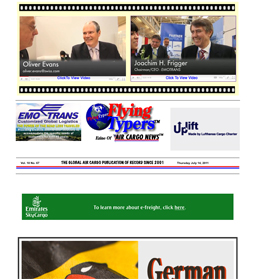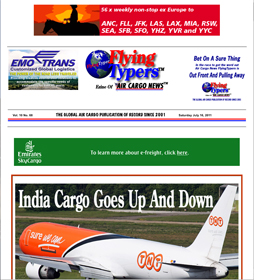
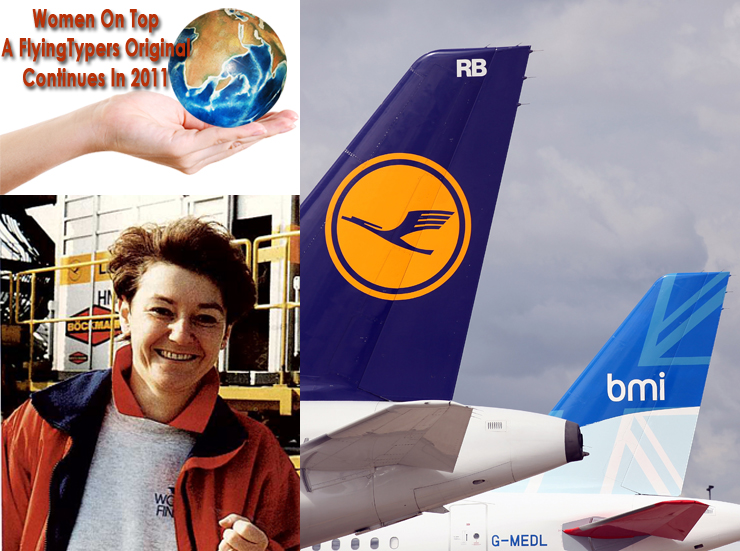
With the women’s magazine “Brigitte“
under her arm as the lead to her career at Lufthansa, Ulrike Schlosser
knows the Lufthansa group in all its facets, but freight she knows best.
She resides in a castle dating back to
the 17th century– but she is no princess. Sitting at her desk,
she has a princely view over the 444-hectar, park-like estate. She did
not miss the wedding ceremony of the year of Prince William and Catherine
Middelton; she watched it on TV. Ulrike Schlosser was born untitled
as a daughter of a doctor in Nürnberg. The castle Donnington Hall
in Derby, Middle England, (also home to BMI) is merely her workplace.
She is a top manager at Lufthansa who
has undertaken the implementation of fully integrating British Midland
(BMI) into the Lufthansa Group. In 2009, the crane had acquired majority
share in the British airline.
BMI´s long-time owner, Sir Michael Bishop, had purchased the castle
years back and turned it into the airline’s headquarters.
Ulrike Schlosser´s job in England
seems to be the definitive destination in her career with Lufthansa,
which began with her training as an Airline Manager in 1974, where everything
revolved around air freight.
Her route to aviation was, however, more
or less taken by chance. Traditionally, the men and women of her family
became either physicians or priests. Surely, the proximity to Frankfurt
airport and the many flights of her father, Professor Hanns Schoberth,
in his capacity as the physician of the German national soccer team,
aroused her curiosity and interest in aviation from an early stage.
But without the column “I´m
interested in…” in which women’s magazine Brigitte
presented attractive jobs for young people, she would have very likely
landed in the faculties of the universities of Mainz or Heidelberg.
What caught her eye was a listing for
the studies of tourism at the University of Applied Sciences in Munich
and a rather insignificant detail in the job description that would
eventually become very typical for the subsequent career of the young
Ulrike Schlosser.
The listing required only a Mittlere Reife,
the German secondary school certificate, as a prerequisite. This was
not enough for the young and self-confident lady who was about to complete
her Abitur, the German high school or A-level exam.
Her motto: If you have to do something,
do it right: “The efforts invested into the Abitur were supposed
to pay off.” Thus, her gaze wandered to the accompanying Lufthansa
logo and what that had to offer. The crane was looking for high-school
graduates for their Airline Management trainee program. On the following
day, the 18-year old tucked the magazine under her arm and drove to
Lufthansa´s town office at the Frankfurt Central Station, inquired
about the relevant requirements and had the application documents sent
to her address. On the evening of the day the postman had delivered
the documents, the letter with her application was sent to Lufthansa’s
headquarters in Cologne.
Ulrike Schlosser, answering to the name
of Schoberth back then, had once again rolled up her sleeves: Lufthansa
watch out, here I come. The qualification test followed shortly before
the Christmas of 1973. The young lady had to cool her heels a bit longer;
a hiring freeze at Lufthansa impeded her start for months to come.
It finally began in September 1974. A
three-year apprenticeship followed, about which Ulrike Schlosser is
still enthusiastic: “I was given the chance to get to know Lufthansa
from left to right and in all its facets.” Every six to eight
weeks, a different station: marketing, bookkeeping, accounting, ticketing,
check-in, sales and counseling at the city office, cargo handling, export
and import. Even in positions where she did not particularly have much
fun, she meticulously kept track of all processes and listened closely.
She literally absorbed everything new and “filled her stock”
incessantly.
Years later, when the former CFO Dr. Karl-Ludwig
Kley offered her the position of Head of Investor Relations and she
inquired with amazement why Kley, of all people, had chosen her for
the position, the director answered in only one sentence: “Because
you know the company and its interconnections better than anyone else.”
It was during her training that Schlosser
realized her heart belonged to cargo. This especially had to do with
the people working there. “I was impressed by the direct and open
way the people interacted with each other.” Even
though back then, the freight department at Lufthansa was “very
small” compared to its size today, “the team spirit, however,
was impressive.” She understands, says Ulrike Schlosser, “why
one would still refer to a special Cargo-Spirit.”
Since she is a “people-person,”
with the desire to have people around in her daily work, as the only
graduate of the hard and challenging Lufthansa-training she deliberately
chose the freight department after her apprenticeship. “Most graduates,”
Ulrike Schlosser recalls, “entered the administration department.
In their eyes I was a bit bizarre.” She describes herself as:
“exotic person, even as a young girl.”
The next 18 years were dedicated to the
freight department. Under Karl-Heinz Köpfle, she was appointed
Route Manager for America at German Cargo. She then built up the marketing
department and became Head of Animal Transportation. During this time,
Ulrike Schlosser left a long trail of profound footprints. Animal Transportation,
which used to transport only a few cats and dogs every now and then
when U.S. soldiers were moved back to their homelands or rich Germans
did not want to leave their beloved four-legged friends behind, developed
into a premium provider of animal transports. Together with outside
service providers, a wide range of animal-friendly freight containers,
including specific horseboxes, were developed. Boeing introduced their
combined version of the 747, offering a lot of storage space for containers
at the back of the aircraft that were big enough for up to six horse
boxes.
Lufthansa and her subsidiary German Cargo
positioned themselves as the market’s premium-provider of animal
transport. As a result in 1989, Ulrike Schlosser landed two major deals.
Lufthansa flew the European and international showjumping elite to the
famous Spruce Meadows Masters in Calgary, Canada, and at the same time
was able to win as customer the organizers of the Volvo Showjumping
Worldcups, which hosted the highly paid tournaments alternatively in
Gotheburg, Sweden, and a city in Europe or overseas. Back then, there
was even a professional horse whisperer on the freight specialists’
payroll – Brian Stuart. Ulrike Schlosser had committed this highly
esteemed and recognized expert on horses to accompany the animal transports
on board at an altitude of 30,000 feet.
When the Volvo Worldcup was supposed to
take place near San Diego in DelMar, California, and the organizers
expressed their wish to have their sensitive show jumping horses flown
out to the nearby military base Naval Air Station in Miramar, the colleagues
at Lufthansa Operations could only smile wearily at this idea. Until
then, no civilian aircraft had been allowed to land on this military
air base, despite the fact that many film scenes from the blockbuster
movie Top Gun with Tom Cruise were shot there. The Americans would never
consent to such a special flight.
Ulrike Schlosser once again sensed the
tingling feeling of ambition rising up inside her, and she rolled up
her sleeves. A couple of months later, approximately 200-miles away
from the military base, the pilots of two U.S.-fighters welcomed the
747- Lufthansa full charter, saluted by shortly rocking their wings,
and escorted the Lufthansa-aircraft onto the runway. There, the 48 show
jumping horses were only a “jump” away from the course.
Ulrike Schlosser, who was on board as well, had visibly enjoyed the
friendly welcome of the American airmen.
In 1987 the company received a lot of
attention in the media as well. The celebrated wild animal tamers Siegfried
and Roy, who lived in Las Vegas, had given the white royal Bengal tigers
Vegas und Siegroy as a present to the amusement park “Phantasialand,”
located near Cologne. Until 1995 the enclosure, which had been specifically
manufactured for the tigers, formed the attraction “Magic World
of Siegfried & Roy” together with an exposition about Siegfried
and Roy themselves. Of course, Lufthansa Cargo carried out the transport.
In 1995, cameramen and photographers were
at hand with their equipment in position when a Lufthansa aircraft carrying
the female panda Yan Yan and the Governing Mayor of Berlin, Eberhard
Diepgen, landed in Berlin. The animal was loaned by China to the Berlin
zoo in order to mate with the male panda bear Bao Bao. Bao Bao, who
had lived in Germany since 1979, was a gift from the Chinese Government
to the former chancellor, Helmut Schmidt. In spite of all efforts, the
liaison of Yan Yan and Bao Bao resulted in no success – no offspring
were conceived.
Ulrike Schlosser had climbed the ladder
of success, and transferred to the passenger business. When Jürgen
Weber implemented the separation of the Lufthansa group into individual
companies in 1995, he insisted on upholding the philosophy of perceiving
the company as a whole in the management. Managers from one sector were
supposed to gain experience in one of the other affiliated companies.
Wilhelm Althen, former boss of Lufthansa
Cargo, “offered Ulrike Schlosser his division.” In retrospect,
he later admitted half jokingly and half seriously that it had been
a mistake. Because Schlosser immersed herself in her new position as
the new Head of Revenue Management, and henceforth had nothing more
to do with Lufthansa Cargo. She stayed six years at the passenger division
and led the Pricing & Yield Management department for more than
three years.
Then came the call from Karl-Ludwig Kley.
Ulrike Schlosser was appointed Head of Investor Relations, got acquainted
with the stock-exchange's power and the particulars of the decisions
of the analysts, and as “all-rounder” followed the call
to the Lufthansa subsidiary LSG in 2006. As Managing Director of In-flight
Management Solutions GmbH, in charge of the in-flight catering for all
Lufthansa flights, she was supposed to lead the company out of the red.
She succeeded in doing this after two years.
In June 2007, yet another call followed.
Through its Group initiative “Upgrade to Industry Leadership”
Lufthansa-CEO Wolfgang Mayrhuber aimed to exploit more effectively the
innovative power of individual companies within the Lufthansa Group,
to profit from synergies better and to implement “crisis awareness”
in the minds and behavior of employees, even in times of high profits.
Ulrike Schlosser was supposed to lead the initiative. She did not have
to think long before she accepted the challenge. The program concluded
in January 2010,
She did not have to wait very long for
the next call, and Ulrike Schlosser boarded the plane to England. However
attractive the work place at the castle may be, the assignment at British
Midland is only for a limited period of time. The 56-year old is well
aware of this fact. Perhaps her path will lead her back to air freight
- back to her great, old love.
Note: Germany will go gala over air cargo with a
week long celebration that commences on August 17th and begins with
the unveiling of a new book commissioned by Lufthansa entitled “100
Years of Air Cargo.” The landing page to keep up with the latest
happenings and celebration of 100 Years of Air Cargo is http://www.100-years-air-cargo.com/
|


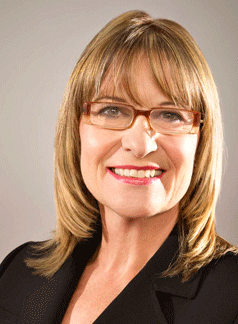

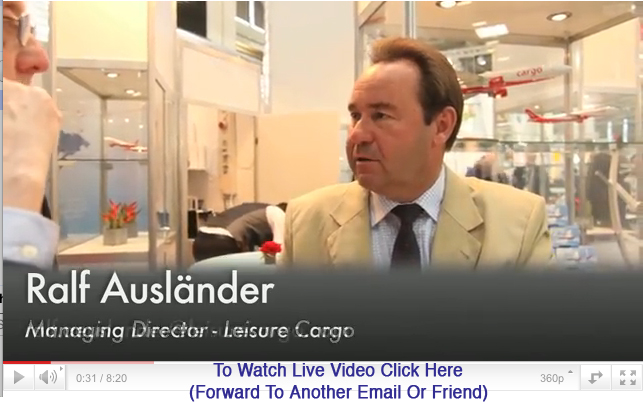
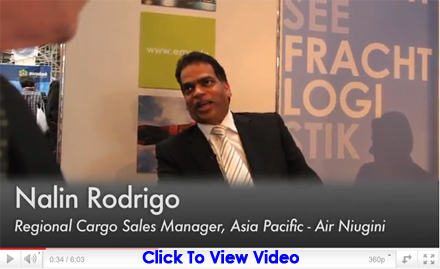




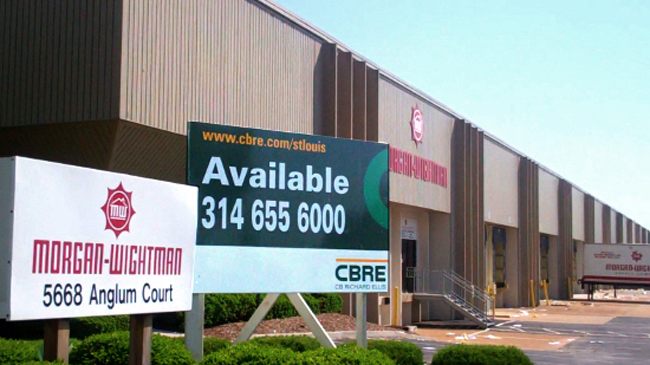 For
the record, last month The Show Me Institute and Michael Webber, a well-known
and respected Kansas City-based air cargo consultant, spearheaded a
widespread debate laying out in detailed
For
the record, last month The Show Me Institute and Michael Webber, a well-known
and respected Kansas City-based air cargo consultant, spearheaded a
widespread debate laying out in detailed 



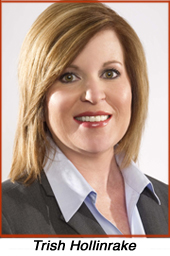
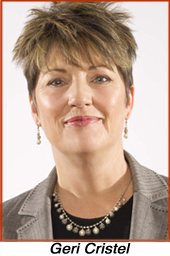
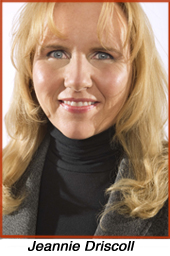





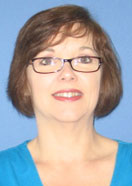





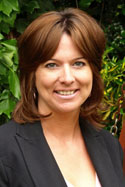

 RE:
RE:
